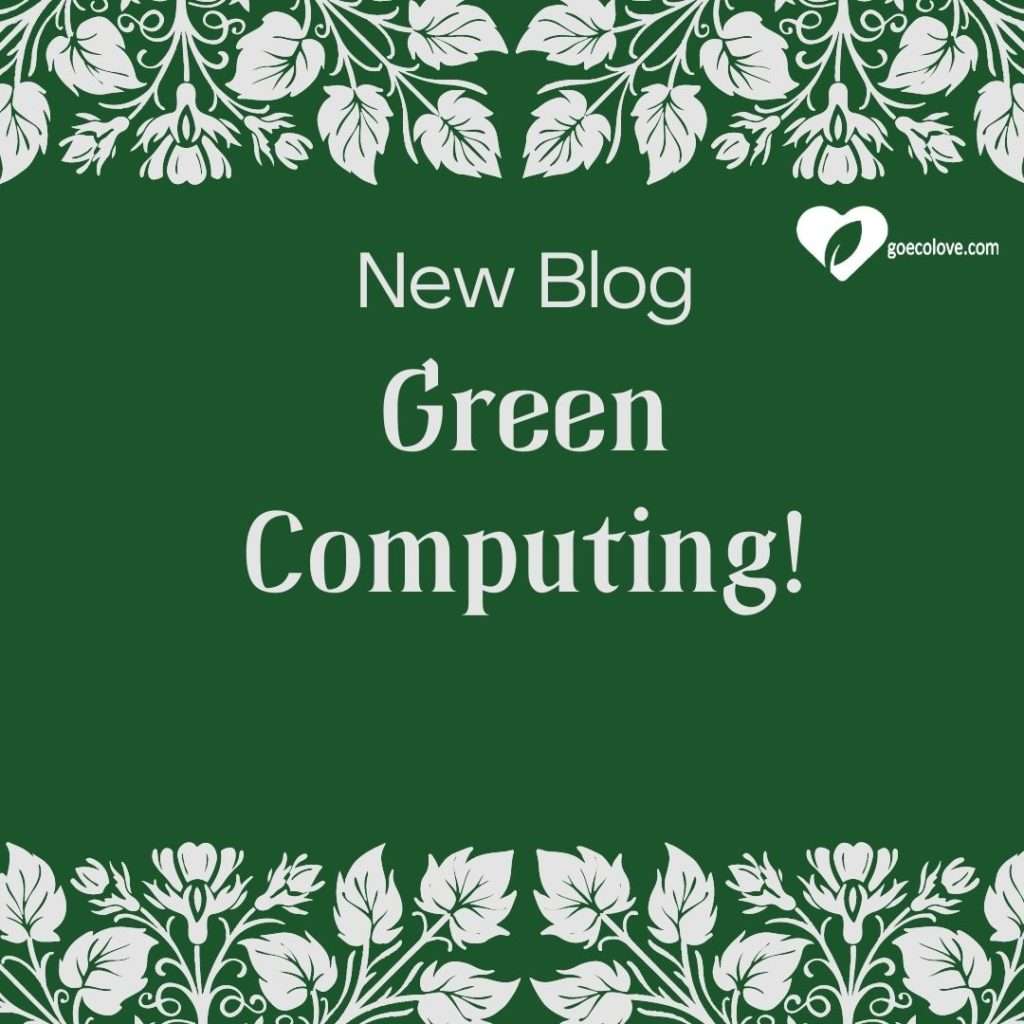Green computing practices came into prominence in 1992, when the Environmental Protection Agency (EPA) launched the Energy Star program. Energy Star helps people and organizations to save money and reduce greenhouse gas emissions by identifying factories, office equipment, home appliances and electronics that have superior energy efficiency.
Green computing is environmentally responsible and eco-friendly use of computers and their resources. It is also defined as the study of designing, engineering, manufacturing, using and disposing of computing devices in a way that reduces environmental impact. It can be defined as the practice of eco-friendly and sustainable IT processes and appliances.
Green Computing refers to durable computing of the environment. Green computing is also known as green information technology (green IT), green ICT or ICT sustainability. This means to reduce the energy demand, to avoid or at least to reduce the use of hazardous materials or to recycle as much as possible in order to minimize waste production.
Green IT includes the development of environmentally sustainable production practices, energy-efficient computers and improved disposal and recycling procedures. This reduces the use of electricity as well as power and reduces environmental waste when we are using a computer.
Many IT manufacturers and vendors are becoming increasingly eco-conscious. So they have started to invest in designing energy-efficient computing devices, reducing the use of dangerous materials and encouraging the recyclability of digital devices.
To promote green computing concepts at all possible levels, the following four approaches are employed:
- Green use: To minimize the electricity consumption of computers and devices and using them in an eco-friendly manner
- Green disposal: Repurposing Equipment or appropriately disposing of, or recycling, unwanted electronic equipment
- Green design: Designing energy-efficient computers, servers, printers, projectors and other digital devices
- Green manufacturing: Reducing waste during the manufacturing of computers and other subsystems to minimize the environmental impact of these activities
Government regulatory authorities also actively work to promote green computing concepts by introducing several voluntary programs and regulations for their enforcement. So Green Computing is becoming increasingly a matter of principle rather than choice.
Advantages of Green Computing:
Here different benefits of green computing are
- Green computing can save energy & more efficient hardware use.
- It reduces Waste.
- Minimises pollution.
- Reduce existing exposure in laptops such as chemical, cancer, nerve damage, and other immune responses in humans.
- Less greenhouse gas emissions.
- Conservation of resources means less energy is required to produce, use and dispose of products.
- Saving energy and resources saves money in the long run.
- Green processing includes changing government initiatives to empower reusing by people and organizations.
Although green IT implies many advantages, it also has some downsides.
Disadvantage of Green Computing
- The initial implementation is costly and may become expensive.
- Some green computers may be very low.
- It involves rapid and frequent change in technology.
- Green IT causes more burden to an individual as the individual has to change his/her behaviour
- Level of understanding and lack of awareness across various companies, professionals, and end-users.
- Fewer courses and publications related to green computing.
So how can you help towards Green Computing?
The average computer users can employ the following actions to make their computing usage more green:
- Use hibernate or sleep mode when away from a computer for extended periods
- Try buying energy-efficient notebook computers, instead of desktop computers.
- Activate the power management features
- Make proper arrangements for safe electronic waste disposal
- Turn off computers at the end of day
- Try to refill printer cartridges, rather than buying new ones
- Instead of purchasing a new computer, try refurbishing an existing device
At the most simple level, green computing is not rocket science. It certainly does not require large amounts of cash or up-front investment. As stated above, the active step for a green computing takes a little effort, yet low energy consumption usually changes to immediate savings.
At Go Eco Love we believe that simple steps go a long way! So make a simple lifestyle choice or behaviour to get you started toward Green Computing.

